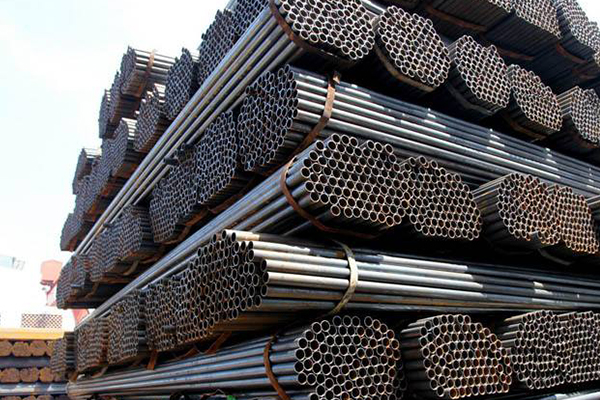In the construction industry, scaffolding is an essential component, providing the necessary support and safety for workers as they perform tasks at elevated heights. Among the various types of scaffolding, pipe scaffolding and fitting scaffolding are widely used. Understanding the differences between these two types can help construction companies make informed decisions based on their specific needs and project requirements. Wancheng Tai, a leading name in the scaffolding industry, offers insights into the key differences between pipe scaffold and fitting scaffold.
Échafaudage de tuyaux
Pipe scaffolding, often referred to as tubular scaffolding, consists of metal pipes, typically made from steel or aluminum. These pipes are connected using couplers, creating a robust and versatile framework.
Key Features of Pipe Scaffold:
-
Strength and Durability
The metal pipes used in pipe scaffolding are highly durable and can withstand significant weight and pressure, making them ideal for heavy-duty construction projects. -
Flexibilité
Pipe scaffolding can be easily adjusted to fit various heights and configurations, offering flexibility for different construction site requirements. -
Ease of Assembly and Disassembly
The use of couplers makes pipe scaffolding relatively easy to assemble and disassemble, reducing labor costs and time. -
Versatility
Suitable for a wide range of applications, pipe scaffolding can be used in residential, commercial, and industrial projects. -
Capacité de charge élevée
The robust nature of metal pipes allows pipe scaffolding to support heavy loads, making it suitable for supporting both workers and materials.

Fitting Scaffold
Fitting scaffolding, also known as system scaffolding, utilizes prefabricated components, including standards, ledgers, and transoms, which are connected using specialized fittings. This type of scaffolding is designed to be modular, providing a high degree of precision and stability.
Key Features of Fitting Scaffold:
-
Precision and Safety
Fitting scaffolding offers a high level of precision due to its prefabricated nature. This precision enhances safety, ensuring a stable and secure structure. -
Speed of Installation
The modular design allows for quick and efficient assembly and disassembly, reducing project timelines and labor costs. -
Customization
Fitting scaffolding can be easily customized to meet specific project requirements, including complex architectural designs. -
Enhanced Stability
The interlocking system of fittings provides superior stability, making it suitable for projects requiring a high level of safety and reliability. -
Reduced Components
With fewer individual components compared to traditional scaffolding, fitting scaffolding simplifies inventory management and transportation.
Key Differences Between Pipe Scaffold and Fitting Scaffold
While both pipe scaffolding and fitting scaffolding serve the same fundamental purpose, there are several key differences that distinguish them:
-
Material and Components
- Échafaudage de tuyaux
Utilizes metal pipes and couplers. - Fitting Scaffold
Comprises prefabricated standards, ledgers, transoms, and specialized fittings.
- Échafaudage de tuyaux
-
Assembly and Disassembly
- Échafaudage de tuyaux
Requires manual assembly using couplers, which can be labor-intensive. - Fitting Scaffold
Features a modular design that allows for quicker and more efficient assembly.
- Échafaudage de tuyaux
-
Flexibility vs. Precision
- Échafaudage de tuyaux
Offers greater flexibility in terms of height and configuration adjustments. - Fitting Scaffold
Provides higher precision and stability due to its prefabricated components.
- Échafaudage de tuyaux
-
Load Capacity
- Échafaudage de tuyaux
Generally has a higher load capacity due to the strength of metal pipes. - Fitting Scaffold
Offers enhanced stability but may have a lower load capacity compared to pipe scaffolding.
- Échafaudage de tuyaux
-
Applications
- Échafaudage de tuyaux
Suitable for a wide range of construction projects, including heavy-duty applications. - Fitting Scaffold
Ideal for projects requiring high precision, safety, and speed of installation.
- Échafaudage de tuyaux

Conclusion
Choosing between pipe scaffolding and fitting scaffolding depends on various factors, including the specific requirements of the construction project, budget, and timeline. Pipe scaffolding, with its strength and flexibility, is well-suited for heavy-duty applications and diverse construction environments. On the other hand, fitting scaffolding offers precision, stability, and quick installation, making it ideal for projects that prioritize safety and efficiency.
Wancheng Tai, with its extensive expertise in the scaffolding industry, provides high-quality solutions tailored to meet the unique needs of every project. By understanding the key differences between pipe scaffolding and fitting scaffolding, construction companies can make informed decisions that enhance safety, efficiency, and overall project success.
Tags: Raccords d'échafaudage - Raccords à douille
